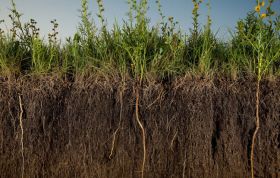Regenerative Agriculture- Natural System Services
Team Members
Brendan Moroso
Neil Hazra
Safaa AlAdwan
Abhipreet Sinha
Anne-Floor Vet
Project Overview
Regenerative agriculture is a set of farming practices that employ nature-based solutions to achieve similar or superior results to those used in current industrial farming practices. By focusing on biological rather than chemical inputs, it takes advantage of services already being performed by plants and animals in a healthy ecosystem, leveraging biodiversity to boost yields. While there is no “official” definition of regenerative agriculture, it generally covers a number of practices including cover cropping, crop rotation and reduced tillage.
Studies from the Soil Health Institute show that regenerative agriculture on average costs slightly less per acre than industrial agriculture, and that two-thirds of farmers can experience improved yields. As it requires less petrochemical-based fertilizers, it also generally has a smaller carbon footprint, with some evidence showing it can even be carbon negative, drawing down carbon dioxide from the atmosphere and fixing it in the pedosphere (soil).
According to Project Drawdown 2018, roughly 20% of global croplands were farmed with one or more regenerative agriculture practices. By 2030, this percentage is projected to climb to roughly 55%. Its popularity is growing in-line with an improved understanding of soil and soil health, and the recognition that the extractive nature of industrial farming practices such as monocropping and synthetic fertilizer use can degrade croplands overtime, threatening returns. As a result, many companies have made substantial commitments towards incorporating regenerative agriculture in their supply chains.
The primary downside to regenerative agriculture is that it is more complex to manage, requiring more engagement and technical knowledge from growers.
This wiki examines several scenarios related to the roll out of regenerative agriculture in the decade from 2022 to 2032.
